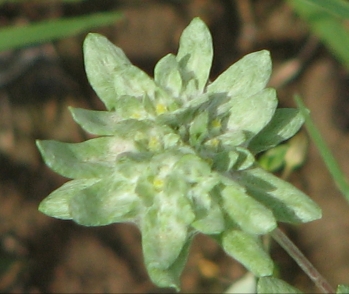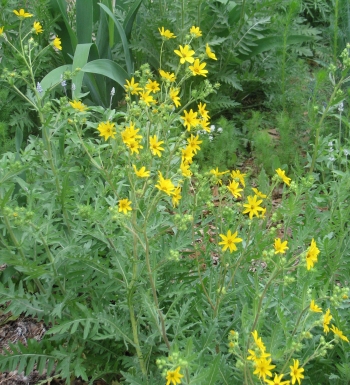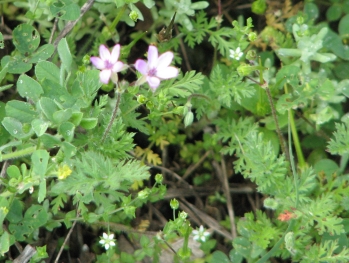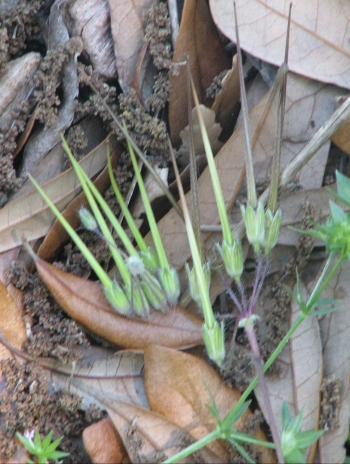Sage; Texas Sage, Leucophyllum frutescens. This hardy, evergreen shrub from the Chihuahua desert sports light grey, rounded leaves, and bright purple tube flowers which are intensely fragrant. A popular flowering hedge, Texas Sage tolerates trimming, is drought resistant, prefers full sun, and blooms when nothing else will. The light grey, slightly fuzzy, oval leaves are attractive in their own right, and smell only slightly of sage. The grey color and hairs give the shrub protection from both the hot sun, and cold desert nights. The plant blooms irregularly, breaking out into full blooms several days after a rain, all the sage plants in an area blooming so vigorously that the shrub is covered with light purple tube flowers that open to a 5 petal corolla. Flowers bud singly from the node of each leaf, covering new growths with blossoms. Honey bees swarm to the heavily pungent flowers for the few days they are open. This shrub will reach 10 – 15 feet in height if watered, but is usually shorter, preferring to spread out in a dense, compact, naturally rounded shape that needs little maintenance. It does not propagate naturally in the DFW region, but does well when planted. Most plants are found in yards, hedges around shopping centers, or boulevard medians.

Texas Sage; a compact shrub with light grey, fuzzy leaves which blooms periodically with masses of purple tube flowers.

Note; oval, slightly pointed, light grey leaves are densely arranged in an alternating whorl.

Note; all Texas Sage shrubs in an area will burst into flower at the same time, covering the plant with pungent, lavender blooms.

Note; lavender tube flowers, the throats speckled with orange or red, open up to a corolla of 5 lobes, two pointing up, three pointing down.

































